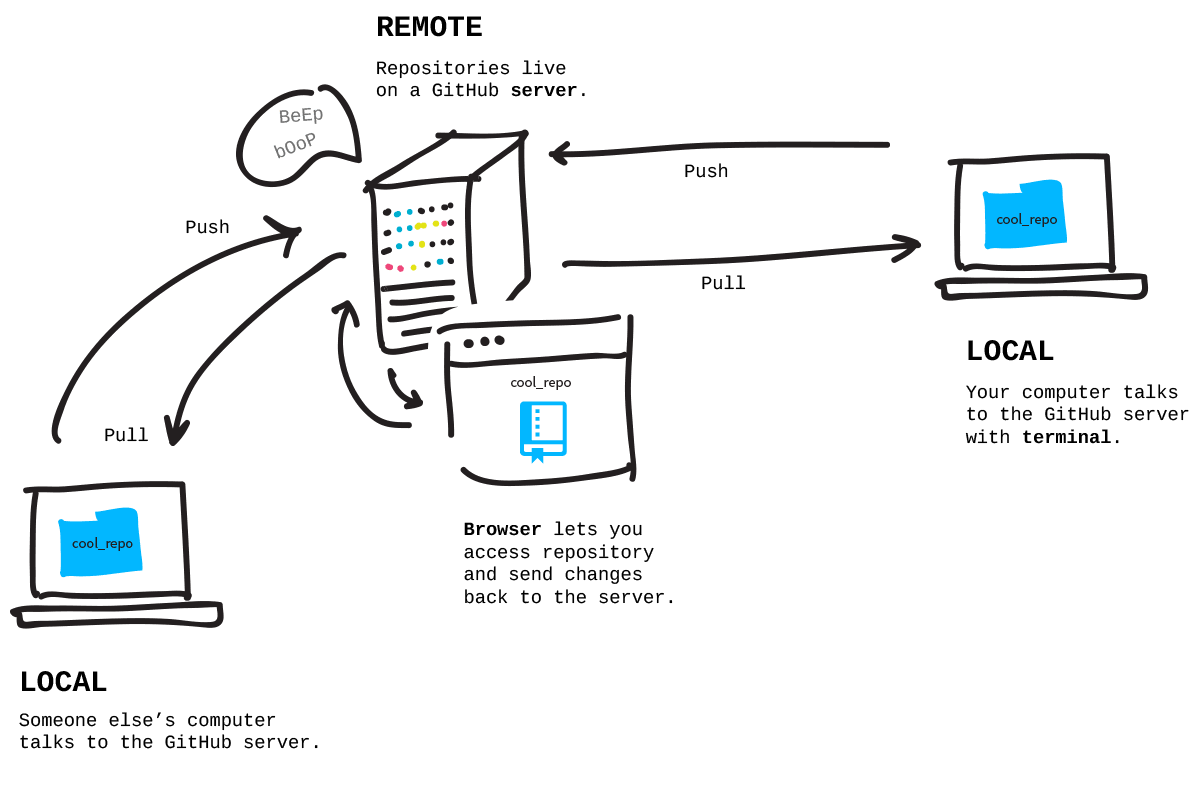

- GIT ADD REMOTE URL TO LOCAL REPOSITORY UPDATE
- GIT ADD REMOTE URL TO LOCAL REPOSITORY FULL
- GIT ADD REMOTE URL TO LOCAL REPOSITORY CODE
A common pattern when initializing a new repo is to go to a hosted Git service like Bitbucket and create a repo there. If you used git init to make a fresh repo, you'll have no remote repo to push changes to. This means that once you make changes to a file and commit them, you can git push those changes to the remote repository. git clone will automatically configure your repo with a remote pointed to the Git URL you cloned it from. If you used git clone in the previous "Initializing a new Repository" section to set up your local repository, your repository is already configured for remote collaboration. This is accomplished through conventions rather than being hardwired into the VCS itself.

For example, by simply designating one Git repo as the “central” repository, it’s possible to replicate a centralized workflow using Git. Of course, there’s nothing stopping you from giving certain Git repos special meaning. Instead of checking a working copy into SVN’s central repository, you push or pull commits from one repository to another. Whereas SVN depends on the relationship between the central repository and the working copy, Git’s collaboration model is based on repository-to-repository interaction. This makes collaborating with Git fundamentally different than with SVN. Unlike SVN, Git makes no distinction between the working copies and the central repository-they're all full-fledged Git repositories.
GIT ADD REMOTE URL TO LOCAL REPOSITORY CODE
It’s important to understand that Git’s idea of a “working copy” is very different from the working copy you get by checking out source code from an SVN repository.
GIT ADD REMOTE URL TO LOCAL REPOSITORY UPDATE
Executing git add -all will take any changed and untracked files in the repo and add them to the repo and update the repo's working tree. Another common use case for git add is the -all option. This was a very limited example, but both commands are covered more in depth on the git add and git commit pages. This example introduced two additional git commands: add and commit. Create a new commit with a message describing what work was done in the commitĬd /path/to/project echo "test content for git tutorial" > CommitTest.txt git add CommitTest.txt git commit -m "added CommitTest.txt to the repo"Īfter executing this example, your repo will now have CommitTest.txt added to the history and will track future updates to the file.git add CommitTest.txt to the repository staging area.Create a new file CommitTest.txt with contents ~"test content for git tutorial"~.The steps being taken in this example are: The following example assumes you have set up a project at /path/to/project. Now that you have a repository cloned or initialized, you can commit file version changes to it. Saving changes to the repository: git add and git commit
GIT ADD REMOTE URL TO LOCAL REPOSITORY FULL
The folder will contain the full history of the remote repository and a newly created main branch.įor more documentation on git clone usage and supported Git URL formats, visit the git clone Page.

The new folder will be named after the REPONAME in this case javascript-data-store. When executed, the latest version of the remote repo files on the main branch will be pulled down and added to a new folder. Git SSH URLs follow a template of: example Git SSH URL would be: where the template values match: In this example, we'll be using the Git SSH protocol. Git supports a few different network protocols and corresponding URL formats. Git clone is used to create a copy or clone of remote repositories. You'll first cd to the root project folder and then execute the git init command. This example assumes you already have an existing project folder that you would like to create a repo within. Versioning an existing project with a new git repository git subdirectory in your current working directory.

Executing this command will create a new. git init is a one-time command you use during the initial setup of a new repo. To create a new repo, you'll use the git init command. It allows you to save versions of your code, which you can access when needed. What is a Git repository?Ī Git repository is a virtual storage of your project.


 0 kommentar(er)
0 kommentar(er)
